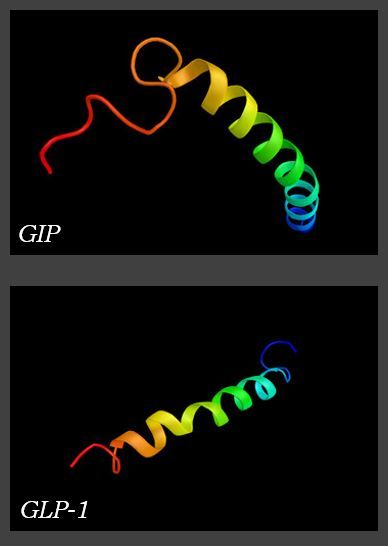- Clinical Technology
- Adult Immunization
- Hepatology
- Pediatric Immunization
- Screening
- Psychiatry
- Allergy
- Women's Health
- Cardiology
- Pediatrics
- Dermatology
- Endocrinology
- Pain Management
- Gastroenterology
- Infectious Disease
- Obesity Medicine
- Rheumatology
- Nephrology
- Neurology
- Pulmonology
SURPASS-4: Tirzepatide Reduces A1c, Weight vs Glargine in Patients with T2D, High CV Risk
New topline data from the global SURPASS-4 trial shows treatment with investigational agent tirzepatide led to superior reductions in A1c and body weight vs insulin glargine.
ibreakstock/stock.adobe.com

In patients with type 2 diabetes (T2D) at high cardiovascular (CV) risk, the GIP/GLP-1 receptor agonist tirzepatide significantly reduced A1c and body weight compared with insulin glargine.
The findings, reported in a press statement from tirzepatide manufacturer Eli Lilly, reflect new top-line data from the SURPASS-4 trial.
SURPASS-4 data demonstrate that the once-weekly novel investigational dual glucose-dependent insulinotropic polypeptide (GIP) and glucagon-like peptide-1 (GLP-1) receptor agonist led to superior reductions in A1c and body weight from baseline across 3 doses administered to adults with T2D and a history of CV events vs titrated insulin glargine, according to the press statement.
For the efficacy estimand, the highest dose of tirzepatide reduced A1c by 2.58% and body weight by 11.7 kg (25.8 lb, 13%) compared with insulin glargine (mean A1c reduction, 1.44%, mean weight gain 1.9 kg (4.2 lb, 2.2%) at 52 weeks.
"Tirzepatide delivered impressive results in this study, providing superior A1C reductions compared to insulin glargine – as well as the addition of significant weight loss – in people with type 2 diabetes who have increased cardiovascular risk," said SURPASS-4 senior investigator John Doupis, MD, PhD, director, diabetes division and clinical research center, Iatriko Paleou Falirou Medical Center, Athens, Greece, in the statement.
Falirou adds that the SURPASS-4 results demonstrate the potential for tirzepatide to help personalize treatment for patients with T2D, providing an option to help reduce both A1c and weight for those on up to 3 oral antidiabetes medications.
The open label, global SURPASS-4 trial is comparing the safety and efficacy of 3 doses of tirzepatide (5, 10, and 15 mg) to titrated insulin glargine in 2002 participants with T2D who have increased CV risk and are treated with between 1 and 3 oral antihyperglycemic medicines (metformin, a sulfonylurea, or an SGLT-2 inhibitor).
Mean duration of T2D among study participants was 11.8 years; mean baseline A1c and weight were 8.52% and 90.3 kg, respectively. More than 85% of participants had a history of CV events. Insulin dose in the insulin glargine arm was titrated following a treat-to-target algorithm with the goal of fasting blood glucose <100 mg/dL. The starting dose of insulin glargine was 10 U/day, and mean dose at 52 weeks was 43 U/day.
All primary and key secondary study endpoints were achieved. All 3 doses of tirzepatide led to superior A1C and body weight reductions vs insulin glargine for both efficacy and treatment-regimen estimands. Among participants receiving the highest dose of tirzepatide, 91% reached A1c <7% and 43% an A1c <5.7%.
Severe hypoglycemia (<54 mg/dL) was seen in 6.7% (5 mg), 5.5% (10 mg), and 6.5% (15 mg) of participants in the tirzepatide groups and in 15% of participants in the insulin glargine group. Hypoglycemia was more common among participants already receiving a sulfonylurea.
A CV safety meta-analysis was conducted across the SURPASS clinical program and consisted of 116 patients with adjudicated major adverse CV events (MACE; composite endpoint of CV death, myocardial infarction, stroke, and hospitalization for unstable angina.) The hazard ratio (HR) for pooled tirzepatide vs pooled comparators was 0.81 (97.85% CI, 0.52-1.26). SURPASS-4 contributed most of the major adverse CV events for the CV safety meta-analysis, and within SURPASS-4, an HR 0.74 (95% CI, 0.51-1.08) was observed.
The SURPASS program has now met regulatory submission requirements for evaluating cardiovascular risk; Lilly intends to submit the full registration package to regulatory authorities by the end of 2021, according to the press release..
Gastrointestinal events were the most commonly reported adverse events among tirzepatide treated patients and abated over time. Treatment discontinuation rates at 52 weeks were higher for tirzepatide (mean 8.1% across doses) vs insulin glargine (2.9%).
SURPASS-4 is the largest and longest trial of the SURPASS program to date; it is the fifth and final global registration study for tirzepatide in T2D to be completed.
Additional results from SURPASS-4 will be presented at the 57th annual meeting of the European Association for the Study of Diabetes, September 27 – October 1, 2021.
Obesity Linked to Faster Alzheimer Disease Progression in Longitudinal Blood Biomarker Analysis
December 2nd 2025Biomarker trajectories over 5 years in study participants with AD show steeper rises in pTau217, NfL, and amyloid burden among those with obesity, highlighting risk factor relevance.
